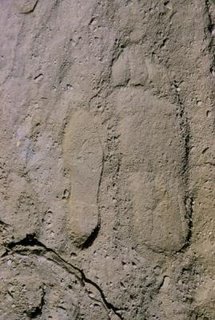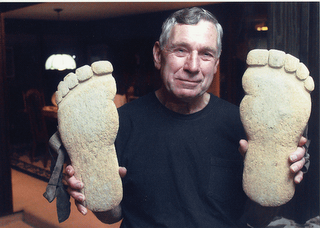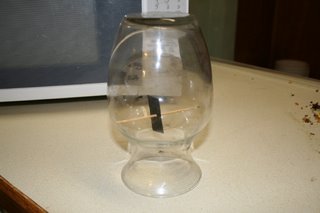The Genius of GilletteWhen I was a kid, I loved almanacs. They were commonly available in the book aisle of the grocery store, and my mother was usually willing to buy them for me. I remember stuffing my desk in the third grade with books I had brought from home, and I think several of them were thick almanacs. Almanacs are full of lists, usually by category, like population, or geographical area, or chronological order.
By the fourth grade, I was working on the idea of a lending library from my desk; I think I wanted ten cents to rent out one of my books. I didn't have many takers. Besides the almanacs, I think I brought John Keel's
Strange Creatures From Time and Space to school, much to my mother's chagrin, as she thought such a thing too valuable to leave home.
As an adult, I figured out the economic advantage of the almanac. Almanacs compile information that is already in the public domain, and thus is not previously copyrighted. How can they include so much for so little? They don't have to pay authors! Of course, as a child I always liked the weirdest and most esoteric stuff I could find. One of my almanacs had a list of either patents or inventions listed by date. I remember reading that the invention of the safety razor was by King C. Gillette in the year 1900. I think this stuck in my 8 year old mind because 1900 was a round number, and I had never seen the name "King" as a first name before. Some years later, my friend Dave Peterman had a very small chihuahua named "King".
Several years ago I developed a taste for books on inventions. I've read several books that mention Gillette's invention in almost reverential tones, as a supreme success story. But not because of the ingenuity of the invention or because it represented a better solution to a problem; no, it was because it was the first great use of an item which needed to be disposed of and replaced.
It should also be noted that I may have remembered my dates incorrectly, as I see that the year 1904 is given in the Wikipedia entry here:
http://en.wikipedia.org/wiki/King_C._Gillette And as with many inventions, there is dispute as to who really "invented" the safety razor. But the bottom line is that most popular accounts of Gillette's invention hail the "safety" aspect of his razor as an improvement over the straight razor, and the brilliant business model entailed by the constant replacement of blades.
I would like to argue that Gillette's real genius was in his design geometry, not his business model. And this is never mentioned in the popular accounts.
First off, we need to get some descriptive terms out of the way. This may sound a bit clunky but I have yet to think up a better way of describing this. Consider the geometry of a knife. First we abstract the handle to a line. The blade of the knife we abstract to a plane, with the cutting edge we abstract to a line. In fact, all blades can be abstracted to planes with cutting edges that form lines within that plane. A knife will serve as the first of three cutting tool geometries. It has a handle whose abstracted line lies within the plane of the blade, and is parallel with the cutting edge.
Geometry number two is that of a spade. A spade has the abstracted line of the handle in the same plane as the blade, but the cutting edge of the blade is at right angles to the line of the handle.
Geometry number three is that of the hoe. A hoe has the cutting edge of the blade also at right angles to the line of the handle, but also has the blade itself at right angles to the line of the handle.
Now go back and consider the geometry of the straight edge razor. When the blade is folded all the way out of the handle, it has "knife" geometry. But this is not the usual way the safety razor is held when actually shaving, usually the blade is positioned at right angles to the handle, and so assumes our geometry number two, the "spade" configuration. The real reason that the straight razor is awkward and somewhat dangerous is that the "knife" and "spade" configurations are not optimum for shaving, as they do not optimize control. In addition, the blade is not fixed rigidly to the handle, and so moves from "knife" to "spade" configuration.
I will argue that Gillette's unheralded breakthrough came with changing the geometry of shaving into a fixed "hoe" configuration. This led to vastly more control of the blade, and thus a safer, much easier way to shave.
How do I come up with ideas like this? Well, this one actually goes back to Descartes himself, with the development of our x, y, and z spatial axis system. After I started paying attention to spatial geometry, I realized that all motion in three dimensions can be reduced to translations and rotations in space. Sailors dub the three rotations about the x,y, and z axis roll, pitch, and yaw. Yaw is the coolest of course, almost as cool as the Scrabble word "qat". Anyway, with three axis of space, you have to be careful when you say something is at a right angle to a line, as there are two ways of a line being at a right angle to another line in space. Thinking about King C. Gillette and his safety razor geometry is a direct result of my own Cartesian meditations on orthogonal lines and planes in space. I guess I just dig right angles...
So think about this the next time you shave; imagine having to do this task with a knife or a paint scraper, and then give silent thanks to King C. Gillette for his revolution in shaving; the geometry of the hoe.









